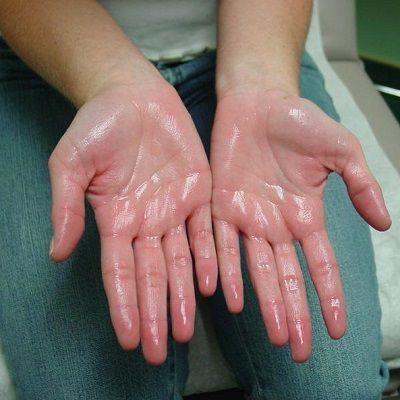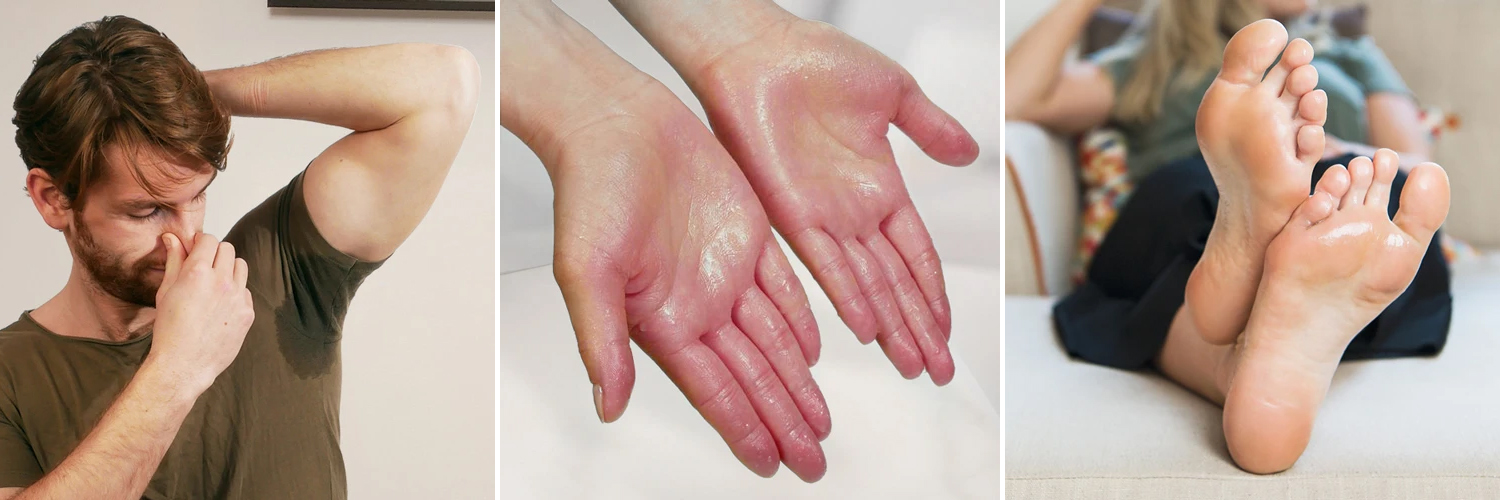Unveiling the Intricacies of Excessive Sweating: A Comprehensive Guide to Diagnosis and Administration
Too much sweating, medically referred to as hyperhidrosis, is a condition that impacts a significant number of individuals and can have an extensive influence on their quality of life. While sweating is a natural bodily feature, its overactivity in hyperhidrosis presents an one-of-a-kind set of obstacles that typically surpass plain pain. Recognizing the underlying reasons, acknowledging the symptoms, and navigating the diagnostic procedure for hyperhidrosis can be complex tasks. In this thorough overview, we will discover the complexities of hyperhidrosis, from its medical diagnosis to the variety of therapy choices available, dropping light on efficient administration approaches for those facing this problem.

Recognizing Hyperhidrosis Causes
Hyperhidrosis causes can be credited to different variables such as genetics, hormone discrepancies, and specific medical problems. Genes play a significant duty in primary focal hyperhidrosis, where people inherit the condition from their family members. This kind of hyperhidrosis commonly manifests in specific areas like the palms, soles of the feet, underarms, and face. Hormonal imbalances, particularly an over active thyroid gland or menopausal adjustments, can also cause extreme sweating. Additionally, particular medical conditions such as diabetes mellitus, heart illness, and infections can cause additional generalized hyperhidrosis. These underlying wellness issues can disrupt the body's all-natural cooling system, triggering the sweat glands to become over active. Comprehending the origin creates of hyperhidrosis is critical in detecting and efficiently handling this condition. By recognizing the specific elements adding to excessive sweating, doctor can tailor therapy strategies to resolve the underlying reason, offering alleviation and improving the lifestyle for people influenced by hyperhidrosis.
Acknowledging Hyperhidrosis Effects

Furthermore, hyperhidrosis symptoms may show up in emotional and social distress, as individuals might really feel embarrassed or nervous regarding their sweating, bring about avoidance of social scenarios (How to stop sweaty hands). Furthermore, repeated episodes of excessive sweating can lead to skin maceration, fungal infections, and a total decline in self-esteem
Diagnostic Refine for Hyperhidrosis
Launching the diagnostic procedure for excessive sweating involves complete evaluation of the person's case history and checkup. Asking about the onset, period, and triggers of sweating episodes is critical to separate between key focal hyperhidrosis and secondary generalized hyperhidrosis. Clinical history ought to also consist of questions concerning drugs, medical conditions, and household background of hyperhidrosis.
During the physical exam, specific focus is paid to the locations affected by sweating. The doctor might analyze the level of sweating, check for indicators of underlying problems, and examine the effect of sweating on the person's lifestyle. Furthermore, particular examinations like the gravimetric examination, starch-iodine examination, or skin conductance dimensions might be performed to quantify the amount of sweat produced.
Additionally, in cases where second hyperhidrosis is presumed, extra examinations such as blood tests, pee tests, and imaging studies may be recommended to identify the underlying source of too much sweating. his response The diagnostic procedure intends to precisely determine the kind and root cause of hyperhidrosis to assist appropriate management techniques.
Treatment Alternatives for Hyperhidrosis
When attending to excessive sweating, different treatment choices are readily available to ease symptoms and improve the person's quality of life. The therapy method for hyperhidrosis depends on the seriousness of signs and the individual's response to initial treatments.
Topical therapies, such as aluminum-based antiperspirants, are frequently advised as the first line of protection for handling moderate cases of hyperhidrosis. These items function by plugging the sweat ducts, hence minimizing the quantity of sweat that reaches the skin's surface area. For people with extra serious symptoms, dental medicines like anticholinergics may be recommended to help decrease sweating. However, these medications can have adverse effects and are not appropriate for every person.

Effective Management Strategies
To successfully handle hyperhidrosis, a comprehensive and personalized treatment strategy customized to the patient's particular requirements and feedback to previous therapies is vital. Iontophoresis, entailing the usage of a low electrical present to minimize sweat gland task, can be beneficial for both palmoplantar and axillary hyperhidrosis. A multidisciplinary method including skin doctors, main treatment physicians, and, if needed, cosmetic surgeons, can maximize the management of hyperhidrosis.
Conclusion
Finally, hyperhidrosis is a condition characterized by extreme sweating, which can greatly influence a person's lifestyle. By comprehending the causes, recognizing the symptoms, and going through the analysis process, doctor can properly handle this condition. Treatment choices include topical medicines, dental medications, injections, and also surgeries in severe situations. With correct diagnosis and management approaches, individuals enduring from hyperhidrosis can find alleviation and improve their total wellness.
Too much sweating, clinically recognized as hyperhidrosis, is a condition that influences a substantial number of people and can have an extensive impact on their top quality of life. By recognizing the details variables contributing to extreme sweating, health care companies can tailor treatment visit this web-site strategies to resolve the underlying reason, supplying relief and improving the top quality of life for individuals influenced by hyperhidrosis.
Hyperhidrosis, defined by too much sweating past what is needed for regulating body temperature, can dramatically impact a person's top quality of life. Asking about the onset, period, and sets off of sweating episodes is vital to set apart between main focal hyperhidrosis and secondary generalized hyperhidrosis. Treatment for hyperhydrosis of hands and feet.In conclusion, hyperhidrosis is a condition characterized by excessive sweating, which can significantly influence an individual's high quality of life